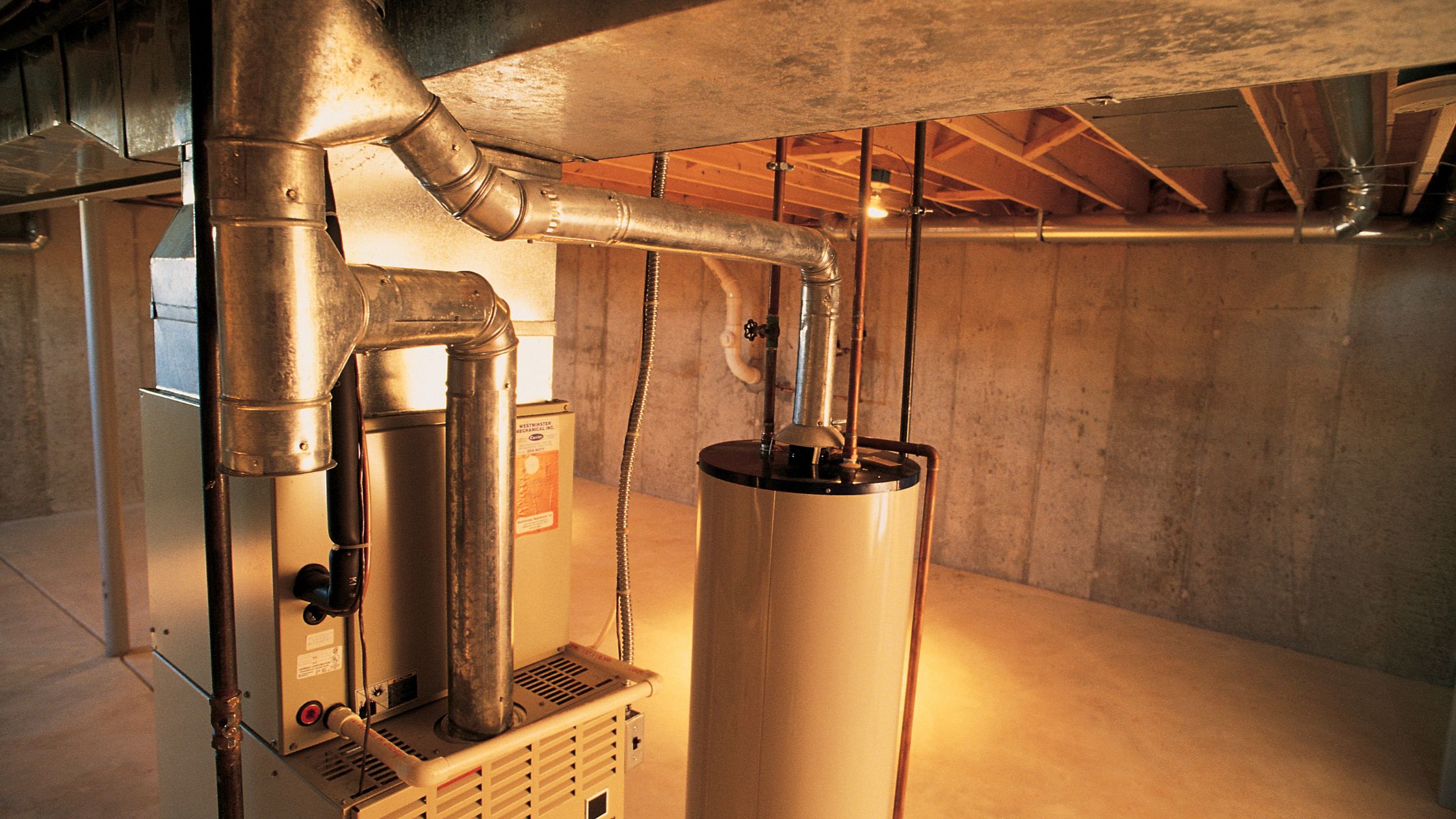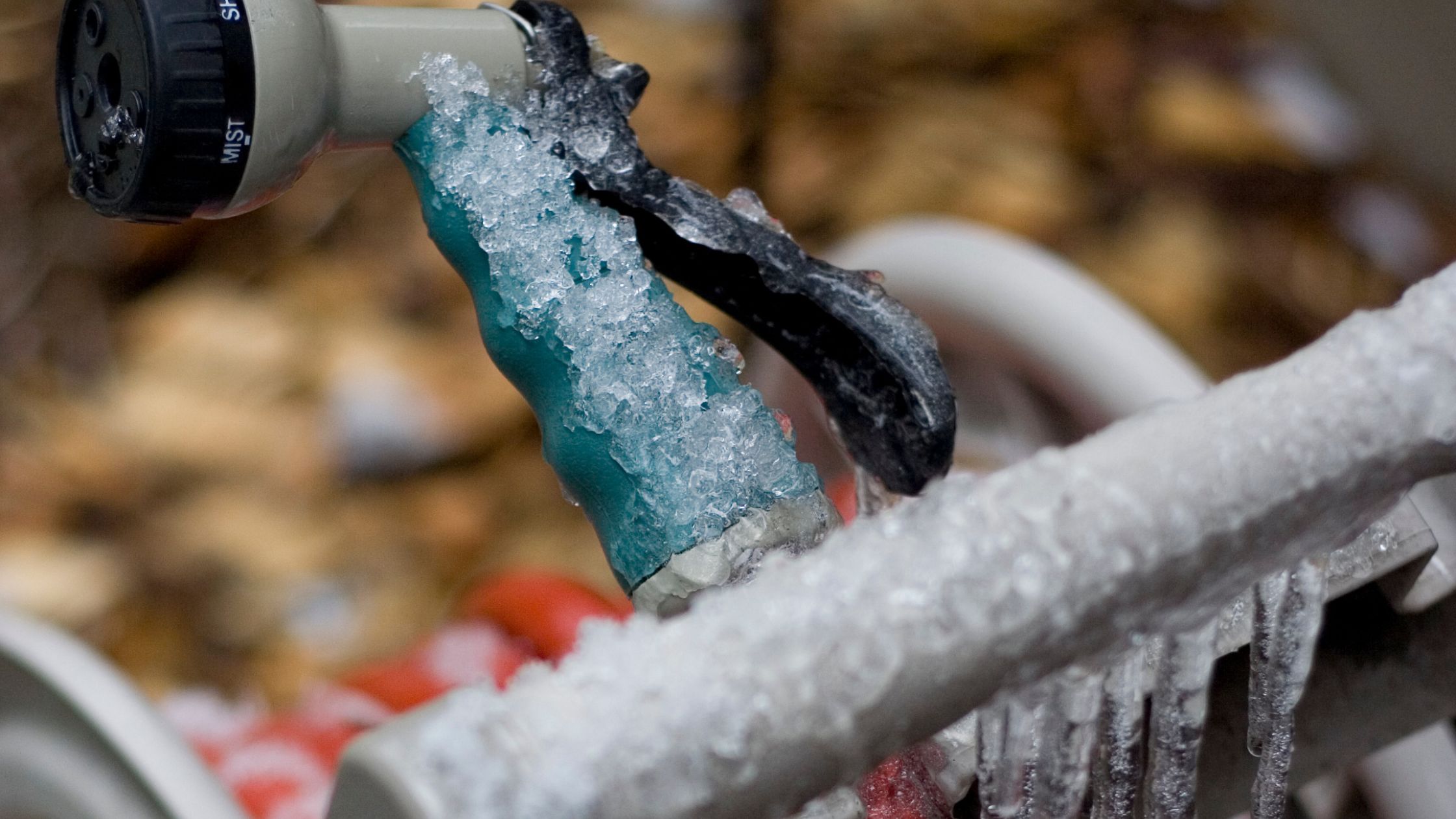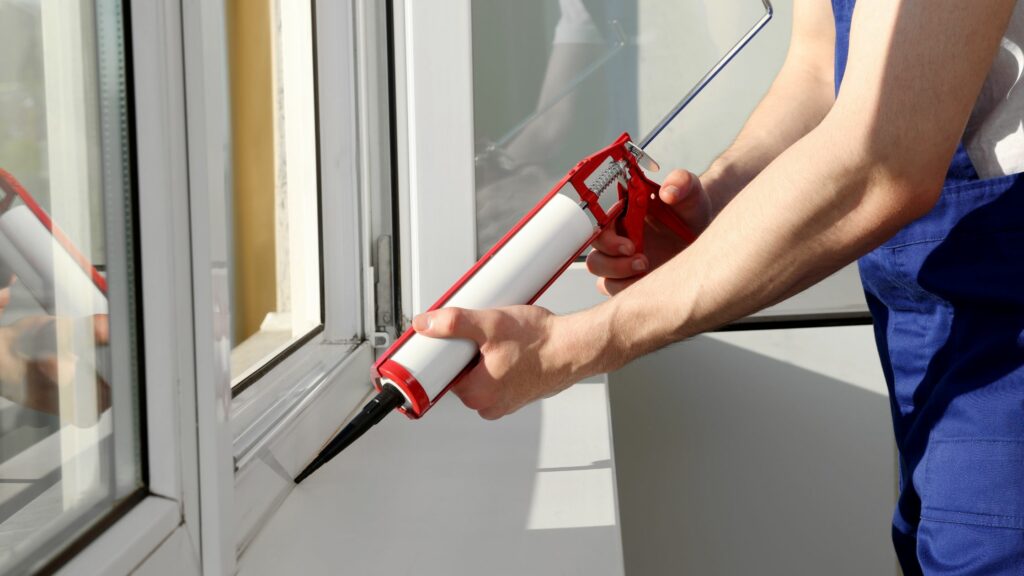by Farley Webmaster | Oct 2, 2023
As the golden hues of autumn transform the beautiful Boulder landscape, it’s the perfect time to begin transitioning your home for the cooler weather ahead. Ensuring your home is warm, energy-efficient, and safe during the cooler months is paramount. Below, we highlight the top five ways to prepare your home for the impending drop in temperature, offering a sanctuary of comfort amidst the chillier seasons.
1. Insulation Inspection
One of the first steps to ensure your home remains cozy and warm is inspecting and bolstering insulation. Poor insulation not only leads to a chilly interior but can also escalate energy costs. Check the insulation in your attic, walls, and floors. Pay attention to window and door seals – consider weather stripping or caulking to eliminate drafts. For a professional touch, consider having a thermal imaging inspection to identify areas losing heat.

2. Heating System Maintenance
Your heating system is the linchpin of a warm home as temperatures dip. Schedule a professional inspection and maintenance service to ensure optimal performance. Replace air filters, check for duct leaks, and ensure the thermostat functions correctly. If you utilize a fireplace, ensure the chimney is clean and safe to operate. This proactive approach averts potential breakdowns and ensures your system operates efficiently.
3. Roof and Gutter Check
A roof inspection is essential to spot potential leaks and weaknesses before they escalate. Clear the gutters to prevent ice dams and ensure water is directed away from the foundation. For those in areas prone to heavy snow, consider adding extra support to withstand weight and avert damage. A professional roofing service can identify and rectify issues, ensuring your roof is winter-ready.

4. Pipes and Plumbing
Frozen pipes are a homeowner’s nightmare. To mitigate this risk, insulate exposed pipes, especially those on the exterior or in unheated areas of the home. Detach garden hoses, drain them, and install covers on outdoor faucets. On particularly frigid nights, allow a small trickle of water to run – the cost of the extra water is nominal compared to repairing a burst pipe.
5. Lawn and Garden Care
Though often overlooked, preparing your lawn and garden for cooler weather is pivotal. Trim branches that could become hazardous in heavy snow or winds. Fertilize and aerate the lawn to promote root growth and robust spring revival. Consider covering sensitive plants or moving them indoors. These steps not only protect your landscape but also enhance your home’s curb appeal, even in winter.
Safeguarding Your Investment
As we usher in the cooler months, prioritizing home maintenance is not just about comfort, but is a strategic approach to safeguarding your home, often one’s most significant investment. Every step taken to insulate, protect, and enhance your property not only ensures a warm and cozy winter but contributes to the long-term value and integrity of your home. For homeowners in the Boulder and Denver metro areas seeking assistance, remember that a network of quality service providers is just a call away. Reach out to the John Farley Real Estate team – we’re here to connect you with trusted professionals who uphold the highest standards of service, ensuring your home is cold weather ready and well-maintained year-round.
by Farley Webmaster | Aug 1, 2023
In an era where environmental consciousness is becoming increasingly important, making your home more energy-efficient is a practical and rewarding step toward sustainability. Not only does it reduce your carbon footprint, but it also lowers energy bills and contributes to a healthier planet. In this blog post, we will explore a variety of effective strategies and tips to transform your home into an energy-efficient sanctuary.
1. Conduct an Energy Audit
Before you embark on your energy-saving journey, conduct a thorough energy audit of your home. This will help you identify areas that are consuming excessive energy and pinpoint opportunities for improvement. You can hire a professional energy auditor or perform a DIY audit. Simple steps, such as checking for air leaks around windows and doors or inspecting insulation, can make a significant difference in your home’s overall efficiency.
2. Invest in Energy-Efficient Appliances
Older appliances tend to consume more energy than their modern, energy-efficient counterparts. When replacing appliances like refrigerators, washing machines, dishwashers, and HVAC systems, opt for those with ENERGY STAR labels. These appliances meet strict energy efficiency guidelines set by the Environmental Protection Agency (EPA) and can significantly reduce your energy consumption.

3. Upgrade to LED Lighting
Swap out traditional incandescent bulbs for energy-efficient LED lights. LED bulbs use up to 80% less energy, last significantly longer, and emit less heat. Though they might be slightly more expensive upfront, the long-term savings and reduced environmental impact make them a worthwhile investment.
4. Optimize Heating and Cooling Systems
Heating and cooling account for a significant portion of a home’s energy consumption. Ensure your heating, ventilation, and air conditioning (HVAC) system is well-maintained, with regular servicing and filter replacements. Consider installing a programmable thermostat, which allows you to set temperature schedules to match your daily routine, avoiding unnecessary energy usage.
5. Insulate Your Home
Proper insulation is key to maintaining a comfortable temperature inside your home and reducing energy wastage. Insulate your walls, attic, and floors to prevent heat from escaping during winter and entering during summer. Insulation materials like fiberglass, cellulose, or foam can make a noticeable difference in both your energy bills and your carbon footprint.

6. Seal Air Leaks
Air leaks are a common culprit behind energy inefficiency. Check for gaps and cracks around windows, doors, electrical outlets, and pipes. Seal these leaks with weatherstripping or caulk to prevent drafts and ensure that your home stays at a consistent temperature.
7. Harness Solar Energy
Take advantage of the sun’s abundant energy by installing solar panels on your roof or property. Solar energy not only reduces your reliance on grid-based electricity but can also earn you credits or rebates from your utility company. Additionally, advancements in battery storage technology allow you to store excess solar energy for use during peak demand times or in case of power outages.
8. Control Water Usage
Being energy-efficient isn’t just about electricity; it also involves water conservation. Install low-flow faucets, shower heads, and toilets to reduce water consumption. Fix any leaks promptly, as dripping faucets can waste gallons of water over time.

9. Embrace Natural Lighting and Ventilation
During daylight hours, make the most of natural lighting by opening curtains and blinds. This reduces the need for artificial lighting, saving energy in the process. Additionally, strategically placed windows can promote natural ventilation, reducing the need for air conditioning in mild weather.
Making your home more energy-efficient is a step toward a sustainable and greener future. With simple yet effective strategies like conducting energy audits, investing in energy-efficient appliances, upgrading lighting, optimizing HVAC systems, insulating, sealing air leaks, harnessing solar energy, controlling water usage, and embracing natural lighting and ventilation, you can create an eco-friendly haven that benefits both your wallet and the environment. Let us all contribute to a brighter and greener tomorrow by adopting these energy-saving practices and inspiring others to do the same.
Next Steps: Resources to Help You Make Your Home Energy Efficient
These resources offer detailed explanations, guides, and tips to help you take meaningful steps in making your home more energy-efficient. Whether you prefer DIY projects or seek professional assistance, these sources provide valuable insights for a greener and more sustainable living.
- Conducting an Energy Audit:
- Energy-Efficient Appliances:
- LED Lighting:
- Optimizing Heating and Cooling Systems:
- Insulation:
- Sealing Air Leaks:
- Harnessing Solar Energy:
- Controlling Water Usage:
- Embracing Natural Lighting and Ventilation:
by Farley Webmaster | Apr 11, 2018

From summer vacations to winter holidays, it seems each season offers the perfect excuse to put off our to-do list. But be careful, homeowners: neglecting your home’s maintenance could put your personal safety—and one of your largest financial investments—at serious risk.
In no time at all, small problems can lead to extensive and expensive repairs. And even if you avoid a catastrophe, those minor issues can still have a big impact. Properties that are not well maintained can lose 10 percent (or more) of their appraised value. The good news is, by dedicating a few hours each season to properly maintaining your home, you can ensure a safe living environment for you and your family … and actually increase the value of your home by one percent annually!1 You just need to know where and how to spend your time.
Use the following checklist as a guide to maintaining your home and lawn throughout the year. It’s applicable for all climates, so please share it with friends and family members who you think could benefit, no matter where their home is located.
Spring
After a long, cold winter, many of us look forward to a fresh start in the spring. Wash away the winter grime, open the windows, and prepare your home for warmer weather and backyard barbecues.
Inside
- Conduct Annual Spring Cleaning
Be sure to tackle those areas that may have gone neglected—such as your blinds, baseboards and fan blades—as well as appliances, including your refrigerator, dishwasher, oven and range hood. Clear out clutter and clothes you no longer wear, and toss old and expired food and medications.
- Shut Down Heating System
Depending on the type of heating system you have, you may need to shut your system down when not in use. Check the manufacturer’s instructions for proper procedures.
- Tune Up A/C
If your home has central air conditioning, schedule an annual tune-up with your HVAC technician. If you have a portable or window unit, be sure to follow the manufacturer’s instructions for proper maintenance.2
- Check Plumbing
It’s a good idea to periodically check your plumbing to spot any leaks or maintenance issues. Look for evidence of leaks—such as water stains on the ceiling—and check for dripping faucets or running toilets that need to be addressed. Inspect your hot water heater for sediment build up. Check your sump pump (if you have one) to ensure it’s working properly.3
- Inspect Smoke Alarm and Carbon Monoxide Detectors
Check that your smoke and carbon monoxide detectors are functioning properly. Batteries should be replaced every six months, so change them now and again in the fall. Follow the manufacturer’s instructions to test your individual devices. And even properly functioning devices should be replaced at least every 10 years, or per the manufacturer’s recommendation.4
Outside
- Inspect Perimeter of Home
Walk around your house and look for any signs of damage or wear and tear that should be addressed. Are there cracks in the foundation? Peeling paint? Loose or missing roof shingles? Make a plan to make needed repairs yourself or hire a contractor.
- Clean Home’s Exterior
Wash windows and clean and replace screens if they were removed during the winter months. For the home’s facade, it’s generally advisable to use the gentlest method that is effective. A simple garden hose will work in most cases.5
- Clean Gutters and Downspouts
Gutters and downspouts should be cleaned at least twice a year. Neglected gutters can cause water damage to a home, so make sure yours are clean and free of debris. If your gutters have screens, you may be able to decrease the frequency of cleanings, but they should still be checked periodically.6
- Rake Leaves
Gently rake your lawn to remove leaves and debris. Too many leaves can cause an excessive layer of thatch, which can damage the roots of your lawn. They can also harbor disease-causing organisms and insects.7 However, take care because overly vigorous raking can damage new grass shoots.
- Seed or Sod Lawn
If you have bare spots, spring is a good time to seed or lay new sod so you can enjoy a beautiful lawn throughout the remainder of the year. The peak summer heat can be too harsh for a new lawn. If you miss this window, early fall is another good time to plant.8
- Apply a Pre-Emergent Herbicide
While a healthy lawn is the best deterrent for weeds, some homeowners choose to use a pre-emergent herbicide in the spring to minimize weeds. When applied at the right time, it can be effective in preventing weeds from germinating. However, a pre-emergent herbicide will also prevent grass seeds from germinating, so only use it if you don’t plan to seed or sod in the spring.
- Plant Flowers
After a long winter, planting annuals and spring perennials is a great way to brighten up your garden. It’s also a good time to prune existing flowers and shrubs and remove and compost any dead plants.
- Mulch Beds
A layer of fresh mulch helps to suppress weeds, retain moisture and moderate soil temperature. However, be sure to strip away old mulch at least every three years to prevent excessive buildup.9
- Fertilize Lawn
Depending on your grass type, an application of fertilizer in the spring may help promote new leaf and root growth, keep your lawn healthy, and reduce weeds.10
- Tune Up Lawn Mower
Send your lawn mower out for a professional tune-up and to have the blades sharpened before the mowing season starts.11
- Inspect Sprinkler System
If you have a sprinkler system, check that it’s working properly and make repairs as needed.
- Check the Deck
If you have a deck or patio, inspect it for signs of damage or deterioration that may have occurred over the winter. Then clean it thoroughly and apply a fresh coat of stain if needed.
- Prepare Pool
If you own a pool, warmer weather signals the start of pool season. Be sure to follow best practices for your particular pool to ensure proper maintenance and safety.
Summer
Summer is generally the time to relax and enjoy your home, but a little time devoted to maintenance will help ensure it looks great and runs efficiently throughout the season.
Inside
- Adjust Ceiling Fans
Make sure they are set to run counter-clockwise in the summer to push air down and create a cooling breeze. Utilizing fans instead of your air conditioner, when possible, will help minimize your utility bills.
- Clean A/C Filters
Be sure to clean or replace your filters monthly, particularly if you’re running your air conditioner often.
- Clear Dryer Vent
Help cut down on summer utility bills by cleaning your laundry dryer vent at least once a year. Not only will it help cut down on drying times, a neglected dryer poses a serious fire hazard.
- Check Weather Stripping
If you’re running your air conditioner in the summer, you’ll want to keep the cold air inside and hot air outside. Check weather stripping around doors and windows to ensure a good seal.
Outside
- Mow Lawn Regularly
Your lawn will probably need regular mowing in the summer. Adjust your mower height to the highest setting, as taller grass helps shade the soil to prevent drought and weeds.
- Water Early in the Morning
Ensure your lawn and garden get plenty of water during the hot summer months. Experts generally recommend watering in the early morning to minimize evaporation, but be mindful of any watering restrictions in your area, which may limit the time and/or days you are allowed to water.
- Weed Weekly
To prevent weeds from taking over your garden and ruining your home’s valuable curb appeal, make a habit of pulling weeds at least once per week.
- Exterminate Pests
Remove any standing water and piles of leaves and debris. Inspect your lawn and perimeter of your home for signs of an invasion. If necessary, call a professional exterminator for assistance.
Fall
Fall ushers in another busy season of home maintenance as you prepare your home for the winter weather ahead.
Inside
- Have Heater Serviced
To ensure safety and efficiency, it’s a good idea to have your heating system serviced and inspected before you run it for the first time.
- Shut Down A/C for the Winter
If you have central air conditioning, you can have it serviced at the same time as your furnace. If you have a portable or window unit, ensure it’s properly sealed or remove it and store it for the winter.
- Inspect Chimney
Fire safety experts recommend that you have your chimney inspected annually and cleaned periodically. Complete this task before you start using your fireplace or furnace.
- Seal Windows and Doors
Check windows and doors for drafts and caulk or add weatherstripping where necessary.
- Check Smoke Alarm and Carbon Monoxide Detectors
If you checked your smoke and carbon monoxide detectors in the spring, they are due for another inspection. Batteries should be replaced every six months, so it’s time to replace them again. Follow the manufacturer’s instructions to test your individual devices. And even properly functioning devices should be replaced at least every 10 years, or per the manufacturer’s recommendation.3
Outside
- Plant Fall Flowers, Grass and Shrubs
Fall is a great time to plant perennials, trees, shrubs, cool-season vegetables and bulbs that will bloom in the spring.12 It’s also a good time to reseed or sod your lawn.
- Rake or Mow Leaves
Once the leaves start falling, it’s time to pull out your rake. A thick layer of leaves left on your grass can lead to an unhealthy lawn. Or, rather than raking, use a mulching mower to create a natural fertilizer for your lawn.
- Apply Fall Fertilizer
If you choose not to use a mulching mower, a fall fertilizer is usually recommended. For best results, aerate your lawn before applying the fertilizer.13
- Inspect Gutters and Roof
Inspect your gutters and downspouts and make needed repairs. Check the roof for any broken or loose tiles. Remove fallen leaves and debris.
- Shut Down Sprinkler System
If you have a sprinkler system, drain any remaining water and shut it down to prevent damage from freezing temperatures over the winter.
- Close Pool
If you have a pool, it’s time to clean and close it up before the winter.
Winter
While it can be tempting to ignore home maintenance issues in the winter, snow and freezing temperatures can do major damage if left untreated. Follow these steps to ensure your house survives the winter months.
Inside
- Maintain Heating System
Check and change filters on your heating system, per the manufacturer’s instructions. If you have a boiler, monitor the water level.
- Tune Up Generator
If you own a portable generator, follow the manufacturer’s instructions for proper maintenance. Make sure it’s working before you need it, and stock up on supplies like fuel, oil and filters.
- Prevent Frozen Pipes
Make sure pipes are well insulated, and keep your heat set to a minimum of 55 degrees when you’re away. If pipes are prone to freezing, leave faucets dripping slightly overnight or when away from home. You may also want to open cabinet doors beneath sinks to let in heat.
Outside
- Drain and Shut Off Outdoor Faucets
Before the first freeze, drain and shut off outdoor faucets. Place an insulated cover over exposed faucets, and store hoses for the winter.
- Remove Window Screens
Removing screens from your windows allows more light in to brighten and warm your home during the dark, cold winter months. Snow can also get trapped between screens and windows, causing damage to window frames and sills.
- Service Snowblower
Don’t wait until the first snowstorm of the season to make sure your snowblower is in good working order. Check the manufacturer’s instructions for maintenance or have it serviced by a professional.
- Stock Up on Ice Melt
Keep plenty of ice melt, or rock salt, on hand in preparation for winter weather. Look for brands that will keep kids and pets safe without doing damage to your walkway or yard.
- Watch Out for Ice Dams
Ice dams are thick ridges of solid ice that can build up along the eaves of your house. They can do major damage to gutters, shingles and siding. Heated cables installed prior to the first winter storm can help.14
- Check for Snow Buildup on Trees
Snow can cause tree limbs to break, which can be especially dangerous if they are near your home. Use a broom to periodically remove excess snow.15
While this checklist should not be considered a complete list of your home’s maintenance needs, it can serve as a general seasonal guide. Systems, structures and fixtures will need to be repaired and replaced from time-to-time, as well. The good news is, the investment you make in maintaining your home now will pay off dividends over time.
Keep a record of all your maintenance, repairs and upgrades for future reference, along with receipts. Not only will it help jog your memory, it can make a big impact on buyers when it comes time to sell your home … and potentially result in a higher selling price.
Are you looking for help with home maintenance or repairs? We have an extensive network of trusted contractors and service providers and are happy to provide referrals! Call or email us, and we can connect you with one of our preferred vendors.
—
Sources:
- HouseLogic.com –
https://www.houselogic.com/organize-maintain/home-maintenance-tips/value-home-maintenance/
- Home Advisor –
https://www.homeadvisor.com/r/servicing-your-air-conditioner/
- Keyes & Sons Plumbing and Heating –
http://keyes-plumbing.com/things-to-check-in-spring/
- Allstate Insurance Blog –
https://blog.allstate.com/test-smoke-detectors/
- Houzz –
https://www.houzz.com/ideabooks/17268616/list/how-to-wash-your-house
- Angie’s List –
https://www.angieslist.com/articles/why-gutter-cleaning-so-important.htm
- Angie’s List –
https://www.angieslist.com/articles/what-thatch-and-how-does-it-impact-my-lawn.htm
- HGTV –
http://www.hgtv.com/design/outdoor-design/landscaping-and-hardscaping/lawns/top-spring-lawn-care-tips-pictures
- This Old House –
https://www.thisoldhouse.com/more/may-mulching
- Lowes –
https://www.lowes.com/projects/lawn-and-garden/fertilize-your-lawn/project
- The New York Times –
https://www.nytimes.com/guides/realestate/home-maintenance-checklist
- Better Homes and Gardens Magazine –
https://www.bhg.com/gardening/yard/garden-care/what-to-plant-in-the-fall/
- The Spruce –
https://www.thespruce.com/late-fall-fertilizing-2152976
- This Old House –
https://www.thisoldhouse.com/how-to/how-to-get-rid-ice-dams
- Houzz –
https://www.houzz.com/ideabooks/55572864/list/your-winter-home-maintenance-checklist
SaveSave
SaveSave
by Farley Webmaster | Sep 29, 2016

The ‘smart home’ is the new ‘internet of things’, or objects that can serve you better by communicating with each other or directly with you through apps on your smart phone. In the ideal version of the wired future, all of our appliances and gadgets talk to each other seamlessly.
What could living in a smart home look like? Picture something like this:
The lights in your bedroom slowly illuminate to quietly awaken you in the morning, replacing the typical blaring alarm. The aroma of fresh brewing coffee drifts in and stirs your senses. Once the lights are all the way up, the heating system kicks on, just in time to warm up your room so you’re not shocked once you crawl out from underneath the duvet.
When you step into the shower, it turns on automatically and remembers your preferred temperature and water pressure. And it will shut off right when you’re finished as it knows how long you take to bathe.
Once you’ve driven out of your garage, your home alarm system arms itself. And it will only unlock automatically when it “sees” and recognizes someone else from your family approaching through programmed in biometrics.
Do smart homes really work this way right now? Not exactly…while you may find some of these smart features in certain homes, we haven’t reached the point where every feature intuitively knows what you want and when you wanted. However, each year we’re getting closer and closer toward that shiny, idealized ‘Jetson’ future.
Here are some trends that we see for smart homes, many of which may also help you save money:
Smart Thermostats
Programmable thermostats that are synchronized with the clock have been around for decades. However, they’re often difficult to set and aren’t necessarily efficient; they simply turn on or off as programmed, whether or not you are there.
With the newer models, smart thermostats can be programmed to adjust the temperature when they sense you are present. And once you leave, they can kick back to standby mode so that you’re saving energy and money. Nest does all of this, and it also allows you to check your usage from your cell phone so that you can adjust the temperature remotely and save even more.
Smart Smoke Detectors
Having a working, effective smoke detector saves lives. But unfortunately, many of us still have those battery-run smoke detectors that make that annoying, piercing beep when their batteries are running low on power. And instead of replacing batteries right away, it’s often easier to pull them out and disable the detector (while risking our lives).
Many of the new smart smoke detectors, like the Birdi, monitor smoke, carbon dioxide, as well as air quality. With this new sensor technology, they know the difference between a real fire and burnt toast.
Smart Sprinkler Control
Weather in our area is predictably unpredictable. Often, especially during the summer months, we fall into a severe drought. But then we might have one season that brings extreme amounts of rain, like we did this past spring.
A smart sprinkler controller like Rachio Iro can not only help save you lots of money on your water bill but also help protect our precious resources.
Programmable by computer or smart phone, it can automatically adjust how often you water your lawn based on the season and the weather forecasts. You can also remotely adjust the settings through a mobile app.
Smart Solar Panels
You can put the sun to work for you by using solar technology to power your home. It’s green and renewable, and can save you money over the long term. A recent study conducted by the NC Clean Energy Technology Center determined that Austin customers who invested in a solar system saved an average of $66 per month during the first year that they owned the system.
With smart solar panels, you can program the technology to monitor their performance and even turn them off in case of a weather emergency or fire.
Smart Home Security Systems
Home monitoring has become much more sophisticated in recent years. With the old-style security systems, you had to call in contractors to wire your home with monitoring sensors.
With new smart technology, you can simply place a few smart devices in your home to monitor movement and sense whether doors and windows are closed or opened. Some systems include audio and video monitoring, as well as sirens to scare off intruders. You get real-time feedback on security breaches through an app. And, because you’re alerted as soon as the system senses an intruder, it’s more likely that they will be caught.
Canary is one popular all-in-one audio-video security system, complete with sirens and night vision.
Smart Locks
Go beyond the standard key locks, which can often be compromised by burglars. The new smart lock systems give you more control over those who can gain access to your home.
Some systems, like the Kwikset Kevo, include encrypted virtual keys that you can program for access for a limited amount of time—for example, allowing guests over for a weekend, or cleaning service in during a specific window of time.
Other door locking systems include biometric technology. The Ola smart lock allows you to program your lock to recognize your family member’s fingerprints. Other systems use facial recognition to greet you and unlock your door.
The new August smart lock integrates with Apple’s technology so you can ask Siri to open your door for you.
Smart lighting systems and light bulbs
A well-lit home feels warm and welcoming, and good lighting can instantly increase the value of your home.
However, annual lighting costs can account for up to 12% of your overall electric bill, or over $200 per year according to Energy Star. You can easily reduce this expense simply by using smart lighting technology to add efficiency.
The Philips Hue wifi-enabled lights make it easy to add to your home without installing specialized equipment. Smart lighting dimmers and sensors can give you more control over how much energy you use and allow you to turn them on and off through your smart phone.
New smart light bulbs can give you control over the warmth or coolness levels of your lighting. With the Lifx LED light bulbs, for example, you can program your light bulbs to turn on or off when you want, to slowly wake you up with increasing illumination, or to change from daytime work lighting to entertainment-friendly shades for parties.
Smart Appliances
Programmable slow cookers and coffee makers are the quaint, old-fashioned versions of these home conveniences. Newer, smart appliances give you more control over how your food is kept and prepared, and make it easier for you to complete pesky household chores.
- Newer coffee makers, like the Smarter coffee machine, let you ‘order’ your coffee exactly to your liking, adjusting everything from bean grind to temperature to strength to time that it’s ready to drink.
- Smart refrigeration technology can help you store your food at just the right temperature, adjusting the thermostat during peak usage times. For example, the LG THINQ fridgecan alert you via smart phone app if a door is accidentally left open.
- Smart ovens can ensure that your food is cooked to the right level of done-ness, and alert you when your meal is ready to eat. June, a new counter oven invented by former Google, Apple, Go-Pro and Path employees will give you even more control—it will contain cameras, thermometers, and other technology to ‘learn’ what you like to eat and make menu suggestions.
- Smart washers and dryers have customizable controls so that you can safely wash any type of fabric. Some units include controls to increase drying time to save energy. And soon, connected appliances from GE, Oster, Samsung, and other makers, will be able to re-order soap and fabric softener directly from Amazon, so you won’t even have to think about running to the store at the last minute.
Have you tested any of these technologies in your home? Did we miss any of your favorite home technologies? Let us know in the comments!
by Farley Webmaster | Jan 14, 2016

January is full of resolutions, so why not make a few for your home? There are plenty of ways to create a fresh start in your home and make it cleaner, more efficient and a generally happier place to be.
1. Increase Energy Efficiency/Reduce your Carbon Footprint
Have the ductwork throughout your home properly inspected to minimize any warm or cool air leaks that might occur through holes or loose connections. Ducts tend to be hidden in your walls, ceilings, attics or crawlspaces, making it a challenging DIY task. To hire a pro you can expect to spend about $1,000 or more depending on the size of your home and accessibility of your ducts. However, by sealing and insulating ductwork you could see hundreds of dollars in savings each year.
Other ways you could reduce your energy usage include:
- Install solar panels on your roof
- Install compact fluorescent bulbs
- Use low-flow showerheads
- Hang your clothes to dry
- Only run the dishwasher or washing machine when full
- Turn off your power strips and/or set your home computer to revert to sleep mode when not in use
- Use drought-tolerant landscaping and reduce the necessity to water
Your commitment to energy efficiency could also land you helpful rebates and incentives. Check out this site to see if there is a program that could help you: http://www.dsireusa.org
2. Clear the Clutter
A simple way to clean your home and make it feel more fresh and inviting is to clear the clutter. It is easy to let things accumulate throughout the year, making the things we love harder to find and spaces to appear smaller and smaller.
Commit to going room by room and donating anything that remains unused, unworn or unloved- giving it a second chance to be appreciated by someone else and freeing up some space. Then, think twice about bringing in anything new that won’t effectively add to your life in some way.
Stash useful but not necessarily pretty items such as shoes, DVDs, mail, etc. in baskets and decorative bins to keep them from overwhelming your space. Shred any unnecessary documents and recycle those odds and ends that tend to collect in everyone’s favorite “junk” drawers.
Clearing your space will help you breathe a little easier and also leave room for the important things.
3. Keep it Safe and Sound
The New Year is the perfect time to do a safety audit of your home including:
- Changing the batteries in the smoke detectors
- Ensuring you have at least one carbon monoxide detector on each floor of your home
- Checking your home for radon- you can find test kits at your local hardware store for around $20
- Cleaning out your dryer lint trap in your machine and any ducts and vents leading to the machine. The material that collects can be highly combustible and present a fire risk
4. Inject New Life in Your Home by Exercising your DIY Skills
It is a beautiful Pinterest kind of world and there are plenty of DIY projects to help you refresh your home. Here are some collections of ideas that you can use to reinvent your space:
5. Make Your Home More Inviting for Guests
Even if you only have the occasional dinner party or overnight visitor, it is nice to keep your high traffic areas looking fresh and inviting. Once you’ve cleared the areas of clutter, showcase items that stimulate conversation or provide comfort (think soft fabrics and plush sofas/pillows) where guests can kick back and feel at home. An inexpensive way to make your home seem polished and put together is to have window coverings like curtains versus just blinds or shutters. They have a way of pulling together décor and creating a warm and soft environment.
*Photo courtesy of Flickr user Amber Case
by Farley Webmaster | Sep 23, 2015
 It is officially Fall and it is time to prep your home for the cold weather that is sure to follow. As Coloradans, we realize that though it is sunny and warm today, cold and snow could strike at any time! We’ve compiled some of the best tips across the web on ways to get your home ready for the colder months of the year.
It is officially Fall and it is time to prep your home for the cold weather that is sure to follow. As Coloradans, we realize that though it is sunny and warm today, cold and snow could strike at any time! We’ve compiled some of the best tips across the web on ways to get your home ready for the colder months of the year.
- Inspect and clean gutters and downspouts.
- Check for drafts and seal gaps and cracks around windows and doors with weather-stripping and caulk.
- Inspect your roof for damaged or curled shingles, corroded flashing, or leaky vents.
- Take steps to repair damaged sidewalks, driveways, and steps.
- Drain and winterize outdoor faucets and irrigation systems.
- Clean or replace dirty furnace filters.
- Do a survey of your home’s heating vents to make sure they’re not blocked or covered by furniture, carpeting, or curtains. Dust vents and clean all filters. Make an appointment for an annual heating system check-up.
- Your ducts are often times out of sight, out of mind, tucked away in the attic or basement, but a home with central heating can lose about 20% of the air that moves through the duct system. Make sure your ducts are in order by properly sealing and insulating. Tightly sealed and insulated ducts can potentially reduce your annual energy bills by $120 or more!
- Check fireplaces for soot or creosote build-up. Better yet, schedule a visit from a reputable chimney sweep.
- Clean the plates or pads of your humidifier to ensure efficient operation.
- If you have a gas-fired room heater, have it inspected by a pro. Also, perform any routine maintenance recommended by the maker.
- Wood stoves are popular in older homes. To avoid a dangerous situation, be sure to inspect your wood stove before firing it up.
- A home safety check should be an annual ritual in every household. Test smoke and CO monitors, inspect (or install) fire extinguishers, review fire escape plans, and rid your home of old newspapers and other fire hazards.
- Drain your water heater and clear out any debris that has settled in the tank
- Buy ENERGY SAVER products and bulbs to light your outdoor pathways or porches. ENERGY STAR makes CFL and LED flood lights that can withstand snow and rain. As an extra energy-saving effort, look for ENERGY STAR products that come with automatic daylight shut-off and motion sensors. And be sure to decorate with LED holiday lights to reduce the cost of decorating your home for the winter holidays.
________________________________________________________________
Resources:
http://www.bhg.com/home-improvement/maintenance/weatherizing/your-homes-fall-checklist/
http://www.rd.com/home/improvement/prepare-your-home-for-fall-and-winter/#ixzz3kq3zO2xx
http://energy.gov/energysaver/articles/cozy-colder-weather-5-ways-prepare-your-home-fall-and-winter-part-1
Photo courtesy of http://www.stockvault.net









